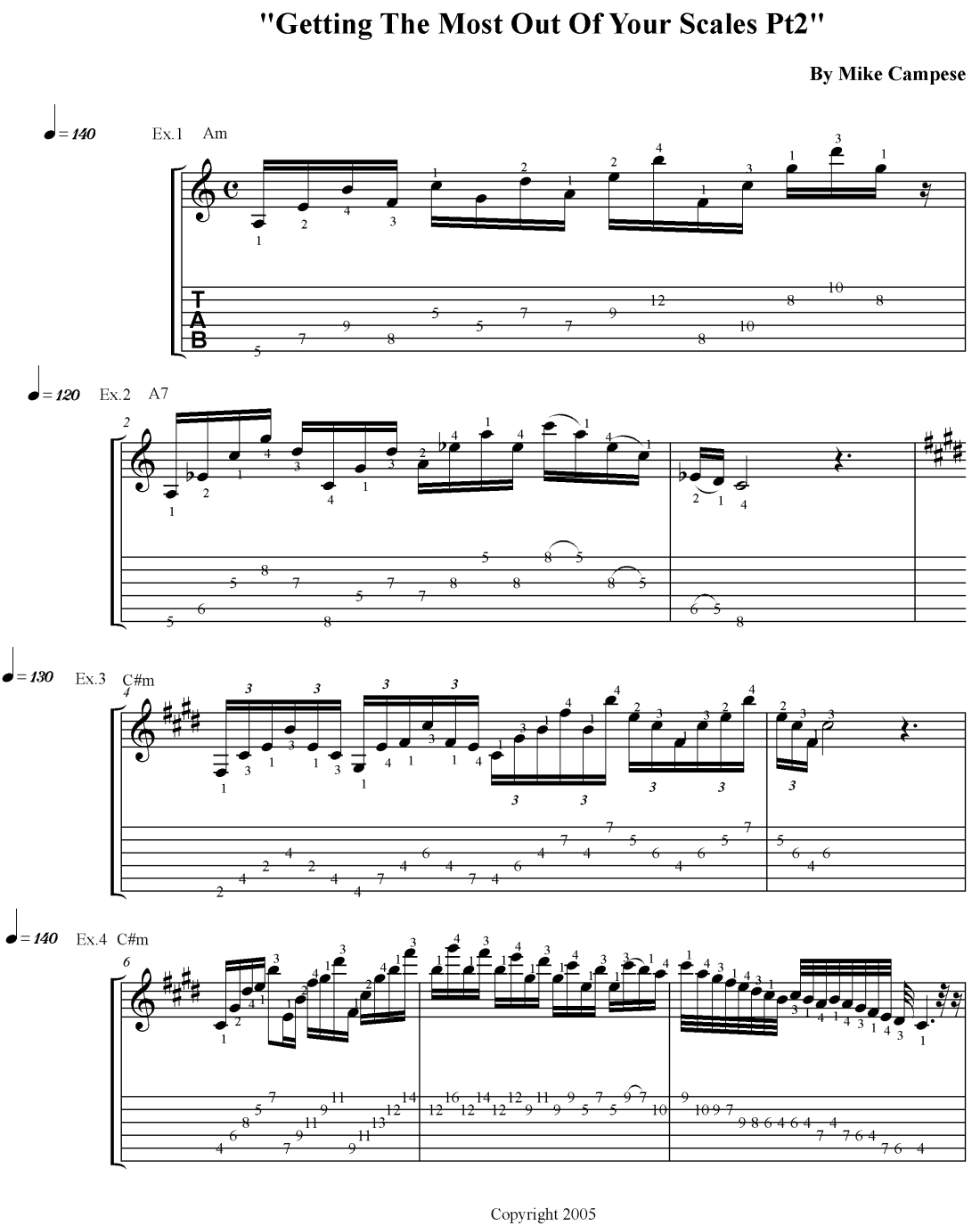Welcome back! In the last lesson we talked about getting the most out of your scales. In this lesson I will give you more examples you can use to make up unique sounds with the scales you are using. Let's get started.
Example 1 is a lick built from the Am scale (A, B, C, D, E, F, G). Let me show you how I figured out this lick. Write out the scale in 2 octaves on paper, make A your starting note and go up 5 notes in the scale from each note you left off with, then count up 5 from there, for example A, E, B, F, C, G, D. All these notes are 5 away from each other, I just moved the last 4 notes down an octave. For the second half I placed the same notes up an octave.
MP3 - Example 1

Example 2 is based off an A Blues scale without the 5th. The notes are (A, C, D, Eb, G). Write out this scale in 2 octaves and go up every 3 notes, for example A, Eb, C, G, D. The notes will keep going higher, but you can move some notes down an octave using octave displacement. The last part of this lick uses some string skipping down the Blues scale.
MP3 - Example 2
Example 3 is a line based on the E major pentatonic scale (E, F#, G#, B, C#) or the relative, the C# minor Pentatonic scale. Extend this scale up 2 octaves and go up 1, 4, 5, 8 off each scale degree, for example E, B, C#, G#, then F#, C#, E, B, then G#, E, F#, C#, etc. Continue this same sequence up the scale. You can make up some interesting lines with these patterns.
MP3 - Example 3
Example 4 is based on the C# minor scale (C#, D#, E. F#, G#, A, B) The first bar of this example is based off 9th arpeggios, C# min 9th and E major 9th, voiced (1, 5, 9, 3, 7). The third arpeggio is an F# 11th arpeggio with no 3rd (F#, C#, G#, B) Make sure you alternate pick these arpeggios. In bar 2, we'll move down the C# minor scale in a interval pattern of a 5th and a 6th, and finally in bar 3 we'll climb down the scale very fast with 32nd notes. Be sure to use the fingerings supplied; also make sure you use alternate picking. Practice this lick in sections until you get it down clean and even.
MP3 - Example 4
This wraps up our lesson! It may seem to be a very technical approach, but you can get many different sounds just by breaking up the scale in many ways using your ear. If you have any questions, feel free to email me. Be sure to check out my CDs on this amazing site and check out my new CD release, "The New". Also visit mikecampese.com for more information.
Mike Campese is an all-around music performer, session artist and teacher competent in many musical styles, electric and acoustic. He has studied at G.I.T. (Honors Graduate), and with Paul Gilbert, Norman Brown, Stanley Jordan, Scott Henderson and Keith Wyatt.